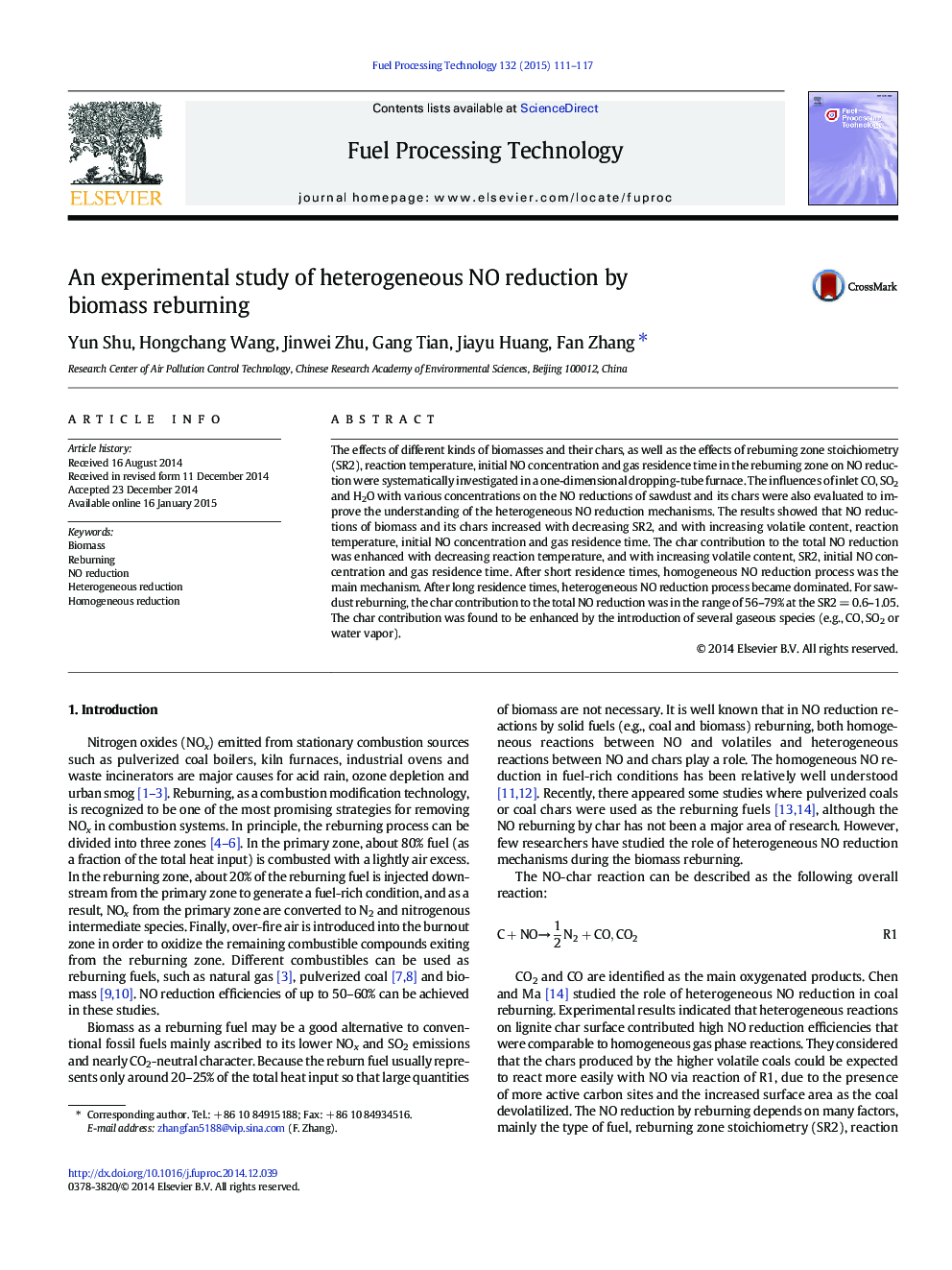| Article ID | Journal | Published Year | Pages | File Type |
|---|---|---|---|---|
| 209599 | Fuel Processing Technology | 2015 | 7 Pages |
•Biomass with a high volatile content exhibited good NO reduction by reburning.•Increasing volatile content could enhance the char contribution to the total NO reduction.•Homogeneous NO reduction started quickly, while heterogeneous NO reduction started later on.•Heterogeneous mechanisms were very important to the biomass reburning process.
The effects of different kinds of biomasses and their chars, as well as the effects of reburning zone stoichiometry (SR2), reaction temperature, initial NO concentration and gas residence time in the reburning zone on NO reduction were systematically investigated in a one-dimensional dropping-tube furnace. The influences of inlet CO, SO2 and H2O with various concentrations on the NO reductions of sawdust and its chars were also evaluated to improve the understanding of the heterogeneous NO reduction mechanisms. The results showed that NO reductions of biomass and its chars increased with decreasing SR2, and with increasing volatile content, reaction temperature, initial NO concentration and gas residence time. The char contribution to the total NO reduction was enhanced with decreasing reaction temperature, and with increasing volatile content, SR2, initial NO concentration and gas residence time. After short residence times, homogeneous NO reduction process was the main mechanism. After long residence times, heterogeneous NO reduction process became dominated. For sawdust reburning, the char contribution to the total NO reduction was in the range of 56–79% at the SR2 = 0.6–1.05. The char contribution was found to be enhanced by the introduction of several gaseous species (e.g., CO, SO2 or water vapor).
